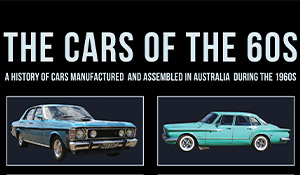1963 Mercedes-Benz 230SL. July 08
Then there's the classic snag. Not too heavy, not too light, the sort that you remember as a youngster and now have to track down with the skill of Inspector Clouseau. This is the 230 SL variety. Maybe Clouseau would call you a "fuehl" for wanting one when you know that waiting a few years down the road was the Grosser Bratwurst, the 500SL, or even a 600SL if you were really greedy.
Today, of course, you get the refined, tuned, gadget-ridden piece de resistance, a true designer snag - the SL63 with a bit of AMG on the side. Overloaded with goodies, this one makes you break wind and have flushes at the mere thought of having 500 bhp about to act upon your inner organs. And it costs as much as filling your rainwater tank with petrol as a safeguard against the day when the greenies say we shall all drive a Prius or else cycle the 75 km from our affordable suburban home into the city each morning. So no, that's not the one.
I think the 230SL is the pick. And so do investors and car buffs in general, as the Mercedes 230SL, with its classic looks and pagoda roof, is regularly voted as one of the most significant motorcars of the 20th Century.
Coded as the W113, work began on the car in 1956 with early designs relying quite heavily on the then current 190/300 sports cars. But by the time it came out in 1963, it was a totally new being. Unibody construction, crush zones front and rear and styling that was perhaps more influenced by Turin than Stuttgart. Sure, it relied on the 220 sedan parts bin, but that was not a negative. And certainly not 45 years later when said parts bin is still open and available to owners and restorers.
The engine was enlarged slightly (to 2306cc), carried Bosch fuel injection and there was a choice of 4 speed manual or auto transmissions. Mercedes stayed with recirculating ball steering, but in all honesty it is no less effective or rewarding than the more "sporty" rack and pinion style. They also deemed that drum brakes were adequate for the rear end. Again, given the relatively modest performance, they were probably right.
Inside is where Mercedes blurred the line between sports car and grand tourer. It is quite roomy (150mm wider than a TR4 for instance) and has lots of glass when the hardtop is fitted. The seats are deeply upholstered and comfortable.
The steering wheel is the traditional large variety with its chrome horn ring reminding us that this car is coming up to fifty years old. The Becker radio with its plastic knobs sits in a dash resplendent with knurled chrome strips and wood accent fillets that fight to say this is a modern Sixties motorcar, although in truth these features now date the car more clearly than its VIN stamp.
These are cars that go adequately, stop well, look fantastic and stopped depreciating years ago. Remember though, that despite M-B saying it's a Sports Light (SL), in reality it's neither of these.
Mind you, being a manual, this test car probably leans more towards the sports genre than an auto version would.
Any problems to look for? You bet. Even Mercedes can rust and the SL was as bad as any of the marque, so check over carefully. This car (a newly imported left-hand drive unit) has spent some of its life in Southern California, but even that is no guarantee that the demon is absent. Having said that, this example does appear rust-free throughout.
Other things to look for include oil pressure at +45 psi and a gearbox that holds top gear when you lift quickly off after accelerating to 80kph. Even a good 'box has a long throw and a rather wooly feel. Bushes in the gear linkage are worth keeping up to scratch. Fuel injection rebuilds can be expensive but parts are readily available for this and almost everything else on a 230SL.
These are a usable, everyday classic that will bring pleasure to any owner. And without having to worry too much about wind.
Trevor West













